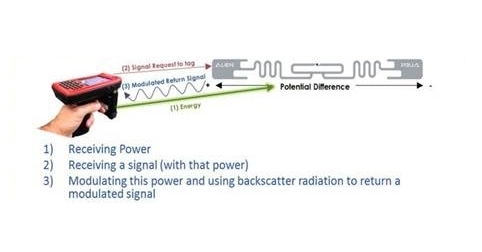Indian Railways to track 3,50,000 wagons and coaches using RFID by 2021
February 7, 2020: To improve service levels and operating efficiency, Indian Railways has been taken up an RFID project (Automatic Identification and Data Collection-AIDC) worth Rs 112.96 crore that aims to automatically track 3,50,000 vehicles as they move across the country by 2021.

February 7, 2020: To improve service levels and operating efficiency, Indian Railways has been taken up an RFID project (Automatic Identification and Data Collection-AIDC) worth Rs 112.96 crore that aims to automatically track 3,50,000 vehicles as they move across the country by 2021.
The project enables real-time visibility of railway wagons through the National Rail Network using technologies like RFID with GS1 global standards. While the Rolling Stock department of the Indian Railways spearheading the project, Centre for Railway Information Systems (CRIS) is developing solutions with GS1 India ensuring the quality of the work and adoption of international standards.
The railways carry over 3 million tons of freight and travel over 65000 route kilometres every day across the country.
GS1 standards
In order that RFID tags can be used in all locations in the country including those with poor connectivity, Indian Railways opted to use the GIAI-202 standard. Indian Railways has successfully field-tested this CRIS designed GIAI202 encoded tags at a speed of 182.7 kilometres per hour. This feat puts the Indian Railways in the league of leaders with respect to AIDC technology in the Railways sector.
Till now approximately 22,000 wagons and 1200 coaches have been fitted with RFID tags. Additionally, roughly 3500 fixed RFID readers are expected to come up which shall communicate to a central control centre using GS1's LLRP (low-level reader protocol) standard.
Integration with other technologies
The solution also includes the integration of RFID readers with various equipment such as Train Presence Detectors (TPDs), trackside condition monitoring equipment etc. The combination of all of these allows for an early identification of rolling stock that may need maintenance. This will enable a paradigm shift on the Indian Railways in its move to improve the reliability of its Rolling Stock, by moving from a predominantly time-based maintenance methodology to condition-based maintenance. The operational advantages in terms of improved availability and reliability of Rolling Stock will affect each and every customer of the Indian Railways.
In case you missed it
Indian Railways in January 2020 has also announced the installing of On-line Monitoring of Rolling stock System (OMRS), a way-side automated inspection system that can detect the faults in the bearings and wheels of trains and catching them before it fails, to help use the coaches, wagons & locomotives efficiently.



